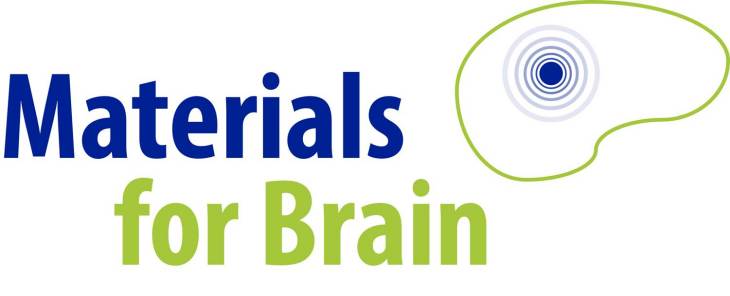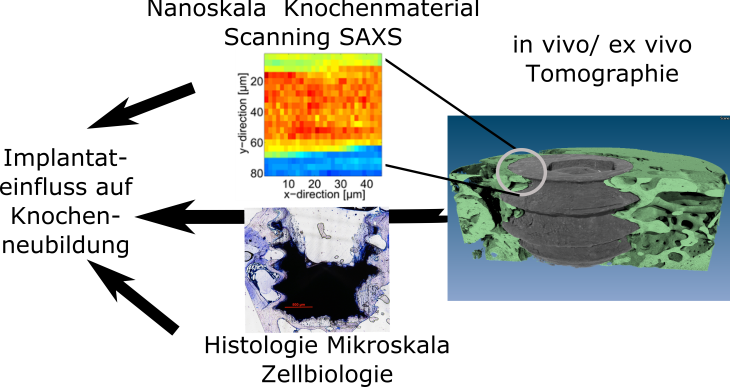Metallic Biomaterials Research Networks
The Istitute of Metallic Biomaterials is involved in various research networks. The scope ranges from the coordination of large EU consortia, a Helmholtz Virtual Institute and a cooperation within the framework of the Röntgen-Ångström Cluster (RÅC) to the participation as partner or coordinator of BMBF and DFG collaborative projects and the Graduate School M4B - Materials for Brain.
EU REPTiS (2024 - 2028)

Responsible Extraction and Processing of Titanium and other Primary Raw Materials for Sourcing EU Industrial Value Chains and Strategic Sectors
The REPTiS consortium comprises 11 partners from 7 EU/EEA countries (Belgium, France, Germany, Poland, Spain, Sweden and Austria) and 2 partners from strategic partner country Ukraine, covering the entire value chain of Titanium.
The aim of the project is to develop an alternative European source of high-quality titanium alloy powder for the reliable production of components for all areas of application. The boundary conditions are economic competitiveness and compliance with the requirements for sustainability and environmental compatibility of the processes. The project is coordinated by the European Powder Metallurgy Association (EPMA) and the powder manufacturer is Velta in the Ukraine.
The Hereon departments Powder-Based Materials (MBP) and Laser Processing and Structural Assessment (WDF) will jointly lead the work package for functional testing and evaluation of the manufactured components. MBP's main task is to test the powders using various methods and to evaluate the sintering behavior, microstructure and correlation with the properties measured on the components. MBP will also produce its own test geometries and carry out sintering tests
website REPTiS
HMC LabFriend (2025 - 2027)

Laboratory Assistant for User-Friendly Metadata Management - speech recognition and ELN input assistance
Experimental (meta-)data is collected in electronic laboratory notebooks (ELNs) and serves as the basis for digital and FAIR research documentation, which is essential for knowledge growth through data reuse. Despite minimizing ambiguous entries, free text entry is time-consuming, error-prone and requires a lot of attention. It is crucial to ensure fast and accurate data capture of high detail along with comprehensive metadata to enable efficient archiving and future use.
To address these challenges, this project aims to develop LabFriend: a dedicated assistant for metadata entry in the laboratory. LabFriend improves the ELN experience by promoting semantically structured data and simplifying the input of free-text entries. First, an autocomplete feature reduces time spent filling out forms, minimizes incorrect entries and ensures consistent terminology usage. Secondly, voice input removes communication barriers with the ELN and enables hands-free metadata entry. The existing ontology implementation in the ELN Herbie uses semantic descriptions of knowledge and cross-references to protocol elements. In addition, the use of the ELN Chemotion and its data repository enables reference and training data to be calculated.
These features will promote FAIR (meta)data with greater volume and fewer errors while advancing the acceptance, accessibility and effectiveness of ELNs in everyday laboratory work. The developed software packages will benefit several research institutions within and outside the Helmholtz Association.
Partners: German Aerospace Center (DLR) and Helmholtz-Zentrum Hereon Institute of Active Polymers
LabFriend @ HMC
DFG - Osseointegration (2023-2026)
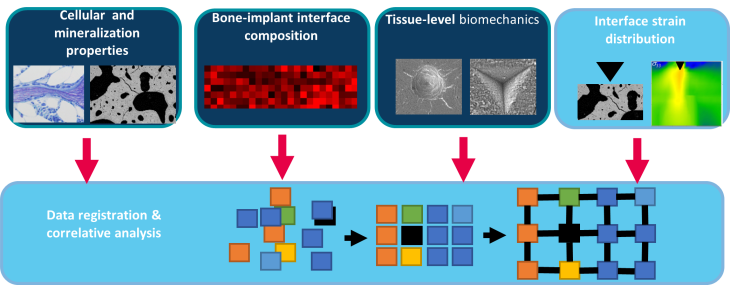
Analysis of the tissue-material interface with biodegradable implants
Together with the UKE Hamburg, the project is investigating the nanostructural, chemical and biomechanical properties at the interface between bones and Mg implants in order to decipher the changes at various levels induced by degradation. We will combine histological sections, elemental distribution analysis, nanoindentation, and small-angle X-ray scattering experiments to obtain information on chemical composition, mechanical properties, and micro- and nanostructural behavior. The result will be a comprehensive data set that will allow a better understanding of the key factors that determine osseointegration in the presence of a constantly remodeling bone-implant interface, and how the resulting properties of the bone matrix depend on this. The aim is to link the biomechanical changes in bone tissue with the structural adjustments during implant degradation, the formation of degradation products and the dynamically changing bone-implant interface.
DFG funding code: WI 4706/2-1
HMC MetaSurf (2024 - 2026)

Interoperability for Surface Data diving from Surface to Structure
MetaSurf, a collaborative project between the Helmholtz Centers HEREON and Karlsruhe Institute of Technology (KIT), aims to establish a more coherent, efficient, and innovative research environment in surface science. The project focuses on making data easily accessible, shareable, and conducive to new discoveries and advancements. It seeks to transform data management, exchange, and utilization by implementing the FAIR principles (Findable, Accessible, Interoperable, and Reusable) for a wide range of experimental and simulation data.
website MetaSurf @ HMC
HMC MOIN4herbie (2022 - 2026)

Maintenance Ontology and audit log INtegration for Herbie
Two-year HMC project together with the Hereon Institute of Carbon Cycles (KC) and GEOMAR Helmholtz Centre for Ocean Research Kiel to digitally record maintenance metadata for two uses cases. This will lead to streamlined and enhanced audit of sensor maintenance data, efficient data recording, and empowerment of technicians to record important metadata for scientific processes.
MOIN4herbie @ HMC
BMBF - KI4D4E (2023 - 2026)

Part of a Synchrotron © Synchrotron Soleil
An AI-based framework for the visualization and evaluation of 4D tomography data for beamline end-users
In the KI4D4E project, modern machine learning methods are utilized for the data processing of synchrotron-radiation tomography experiments, such as differentiable operators, micro- and nano-computer tomography (CT) simulation, compensation of 4D artifacts, propagation-based phase retrieval, and 4D-CT digital volume correlation. These methods are applied to the experimental data analysis of biodegradable implant materials at the synchrotron radiation source PETRA III at DESY in Hamburg, Germany
Partners:
• University of Stuttgart
• University of Passau, Institute for Software Systems in Technical Applications of Computer Science (FORWISS)
• Friedrich-Alexander-University Erlangen-Nuremberg
• Karlsruhe Institute of Technology (KIT), Laboratory for Applications of Synchrotron Radiation
• Fraunhofer-Gesellschaft zur Förderung der angewandten Forschung e.V., Development Center X-ray Technology of the Fraunhofer Institute for Integrated Circuits (IIS)
• Helmholtz-Zentrum Berlin für Materialien und Energie GmbH
• Helmholtz Center Hereon GmbH, Inst. für Werkstoffphysik
• Research Center Jülich
Associated partners: European Spallation Source (ESS), European Synchrotron Radiation Facility (ESRF), Helmholtz-Zentrum Hereon/German Engineering Materials Science Centre (GEMS), Institut Laue-Langevin (ILL), math2market GmbH, MITOS GmbH, Xploraytion GmbH
website KI4D4E @ Fraunhofer IIS
Humboldt scholarship holder (2023 - 2025)

The institute has once again succeeded in attracting a Humboldt scholarship holder. During his two-year research stay at Hereon, he will investigate the coating of hybrid magnesium-titanium implants for controlled degradation. The project 'Development of innovative approaches towards surface biofunctionalization of selectively biodegradable Mg-Ti hybrid implants' is a collaboration with the Institute of Surface Science (MO).
website Humboldt Research Fellowship
BMBF VIP+ - BioMag3D (2022 - 2025)
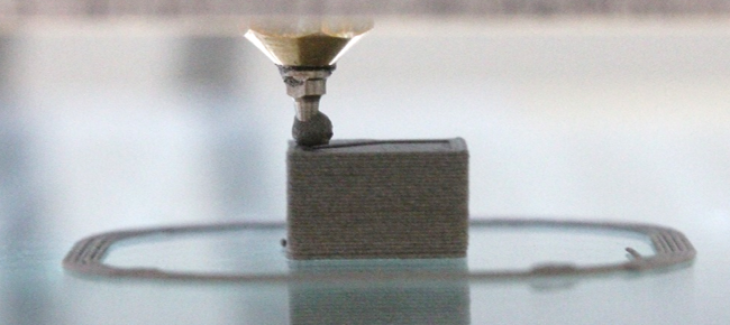
Production of green bodies using pistonbased feedstock fabrication © Fraunhofer IAPT
Development and validation of 3D printing of bioabsorbable magnesium implants with graded properties
Metal implants are often used to stabilize and align complicated bone fractures. On the one hand, these have to be adapted to the respective patient during the operation, and on the other hand, the implants often have to be removed again in another operation after healing. In the BioMag3D project we together with the Fraunhofer IAPT aim at using 3D printing to produce implants that are individually adapted to the patient and that degrade in the body over time. To this end, novel magnesium alloys are used, which are produced using a newly developed 3D printing process known as piston-based feedstock fabrication (PFF), in which the material is fed into the process via pistons instead of screw conveyors. The manufacturing process and the implants produced with it are to be validated in the project so that a clinical study and approval as a medical device are subsequently possible.
website BioMag3D (German only)
BMBF – OPTI-TRIALS (2022 - 2025)

Novel statistical solutions for optimized experimental design hand in hand with domain expertise
OPTI-TRIALS aims to reduce the number of laboratory animals in medical testing and at the same time to gain more knowledge from individual experiments. To this end, methods are to be established together with Bielefeld University (coordinator) and Helmholtz Munich that require fewer measuring points and still provide statistically meaningful data.
The methodological issues are developed, tested and established on the basis of biological applications. Beyond the project, the findings are incorporated into training courses for young scientists and are made accessible to the community through freely available software.
website OPTI-TRIALS – BMBF Digitale Zukunft (German only)
HMC ELN-DIY-Meta (2022 - 2024)
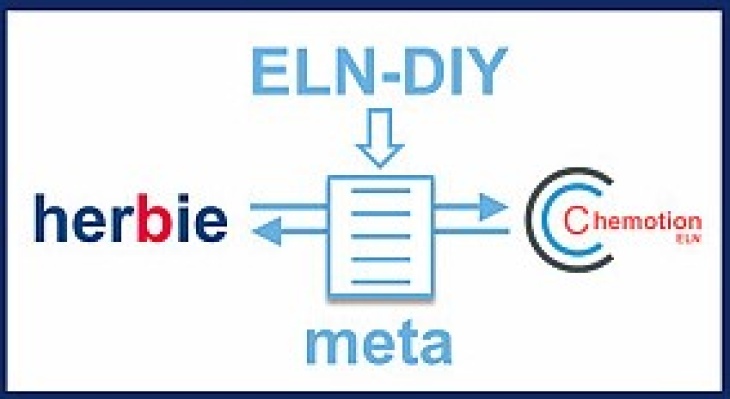
ELN-Driven-InteroperabilitY for Metadata
In ELN-DIY-Meta, an interface for metadata transfer between the open-source ELNs Chemotion (development lead at KIT) and Herbie (development at Hereon) will be developed.
website ELN-DIY-Meta
HMC MetaCook (2022 - 2024)

The Metadata Cookbook
In MetaCook, an interactive software (VocPopuli) is developed for high-quality vocabularies and metadata of shared FAIR data. VocPopuli offers the capability to immediately apply the vocabulary to datasets stored in electronic lab notebooks. This allows users of different backgrounds and experience levels to easily navigate and receive interactive guidance instead of having to read lists of instructions.
MetaCook @ HMC
HIP SmartPhase (2022 - 2024)
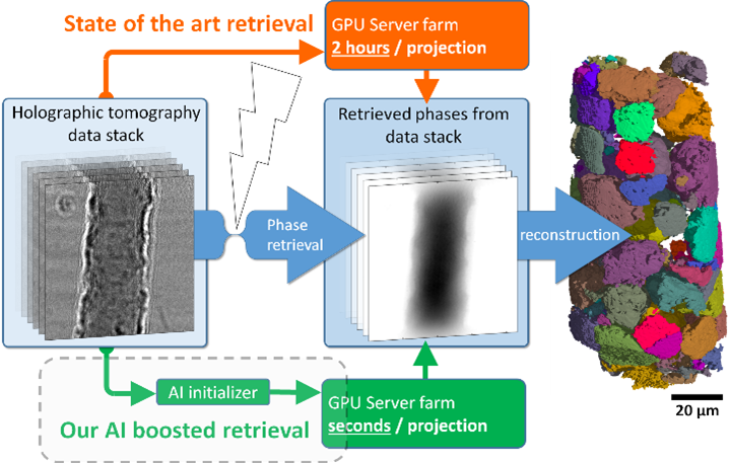
Smart X-ray phase retrieval for multi-scale material systems
The SmartPhase project is a collaboration of the Helmholtz centers DESY, Hereon, HZDR and HZB. The goal of SmartPhase is to provide users of lensless phase-contrast full-field x-ray microscopy with a toolbox for reconstructing their data during an experiment. This is achieved by combining the loss function optimization implemented in pytorch with physically informed neural networks for online reconstruction.
website SmartPhase
BMBF computational life science - MDLMA (2020 - 2023)
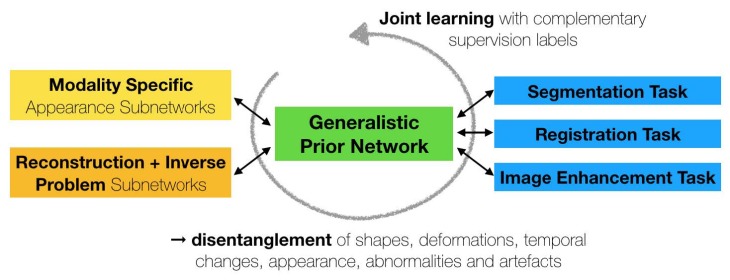
MDLMA network model
Multi-task Deep Learning for Large-scale Multimodal Biomedical Image Analysis
In order to be able to efficiently process and analyze the ever-growing number of biomedical data from a wide variety of sources or imaging modalities, the project develops generic deep learning (DL) methods.
The methods and software tools developed in the project are used to study and develop biodegradable magnesium-based implant materials.
Under the leadership of Prof. R. Willumeit-Römer, the project involves the Hereon, two institutes of the University of Lübeck, DESY and the company Syntellix AG.
HGF Incubator - Uncertainty Quantification (2019 - 2023)
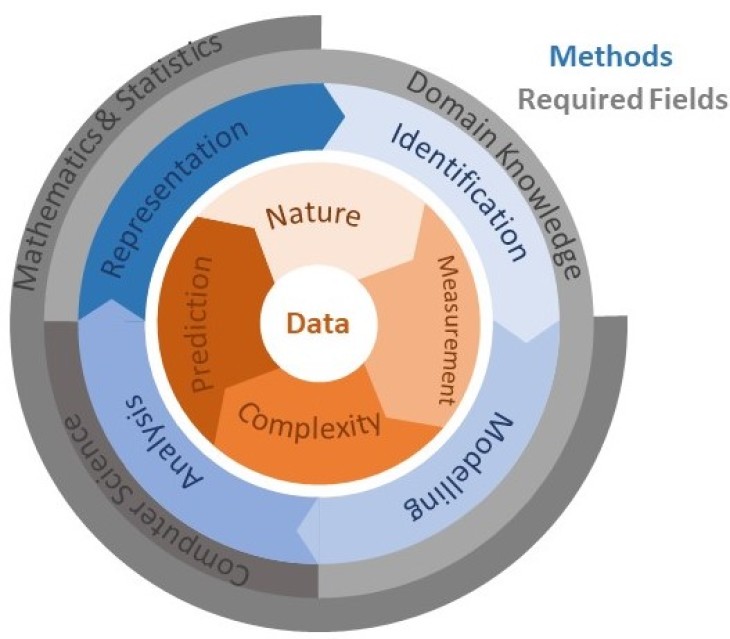
From Data To Reliable Knowledge
Science has entered an era in which an avalanche of data becomes available, and Helmholtz researchers are at the forefront of experimental and simulation sciences contributing to this development. One of the biggest challenges nowadays is to use such data to solve the major questions asked by society, science and economy.
Both data and methods are subject to uncertainty, which is often considered as unavoidable burden in real-world applications. Using appropriate analytical methods, however, uncertainty can be turned into a valuable source of information.
The aim of this project is to provide a common framework for knowledge transfer in the area of uncertainty quantification (UQ). It connects applied researchers with those from mathematics, statistics and computer science. In addition, we build collaborations between research centers and application areas in order to fully exploit the decentralized expertise of the Helmholtz Association.
The project involves a total of seven Helmholtz centers working together. The task of our group at Hereon is to link the computer modeling of magnesium alloy corrosion with the many available data to quantify the predictive power of the model based on the amount and quality of the data used as input and validation.
Graduate School M4B - Materials for brain (2017 - 2023)
Thin film functional materials for minimally invasive therapy of brain diseases
Cooperation between the Christian-Albrechts-University of Kiel (CAU), the University Clinic of Schleswig-Holstein (UKSH) and the Helmholtz Center Hereon (Hereon).
Within the framework of the Graduate School, minimally invasive treatment strategies for diseases of the brain based on novel thin-film material compounds are to be explored in a complexity and functionality that goes far beyond previous approaches. The realisation of such treatment strategies in clinical medicine will be a milestone in the therapy of these diseases.
The development of such cutting-edge localized therapies and suitable functional materials requires substantial collaboration between materials science and medicine, as well as new approaches to solutions and creative openness to the view of the respective other subject.
EU MSCA ETN MgSafe (2018 - 2022)

Promoting patient safety by a novel combination of imaging technologies for biodegradable magnesium implants
As part of the Marie Skłodowska Curie Action (MSCA) the European Training Network MgSafe, 15 young researchers investigate biodegradable magnesium implants. The project is coordinated by the Helmholtz Zentrum Hereon (Hereon); it brings together eight universities and research institutions as well as four technology companies from eight European countries. The European Union (EU) provides a funding programme of about four million euros.
For their research, the young scientists use various imaging methods, which will enable them to most precisely monitor the behaviour of magnesium implants during the process of bio-compatible degradation.The obtained multimodal imaging data are combined with molecular biological / biochemical analysis, thereby increasing the information about physiological changes. All relevant biological and chemical in vivo and ex vivo data are merged by computational 3D methods, simulations and machine learning approaches.
Prof. Dr. Regine Willumeit-Römer, coordinator of the project and Head of the Institute of Metallic Biomaterials at the Helmholtz Zentrum in Geesthacht, explains: "Biomedical imaging is fundamental to both diagnosis and therapy, because we need to monitor the behaviour of the degrading implant materials. There is still need for improvement as far as the new class of biodegradable magnesium-based implants is concerned. In the MgSafe project, we will establish new techniques while educating 15 PhD students interdisciplinary in both imaging and implant technologies."
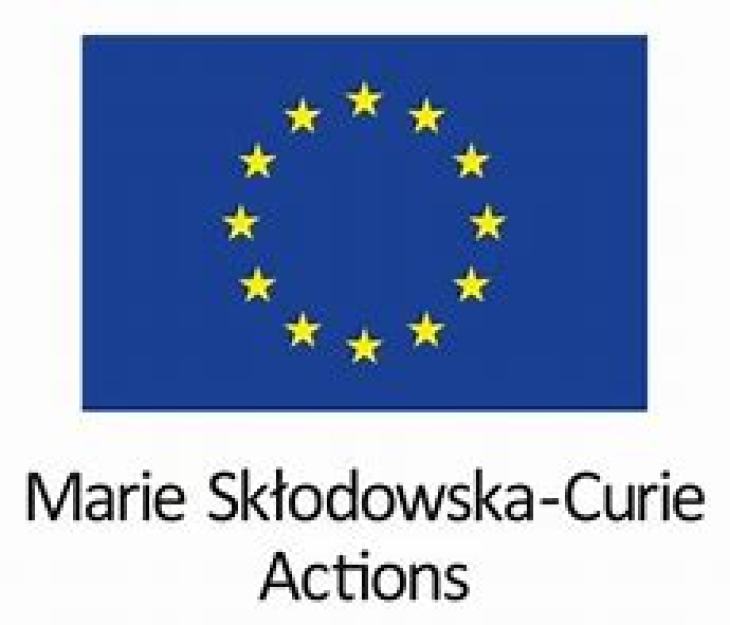
This project has received funding from the European Union’s Horizon 2020 research and innovation programme under the Marie Skłodowska-Curie grant agreement No 811226
How MgSafe will improve patient safety and what the project is all about:
MgSafe: X-ray vision in 360°
15 PhD students push the safety of degradable magnesium implants even further - within the EU project MgSafe
DFG - OAMag Therapie (2018 - 2021)
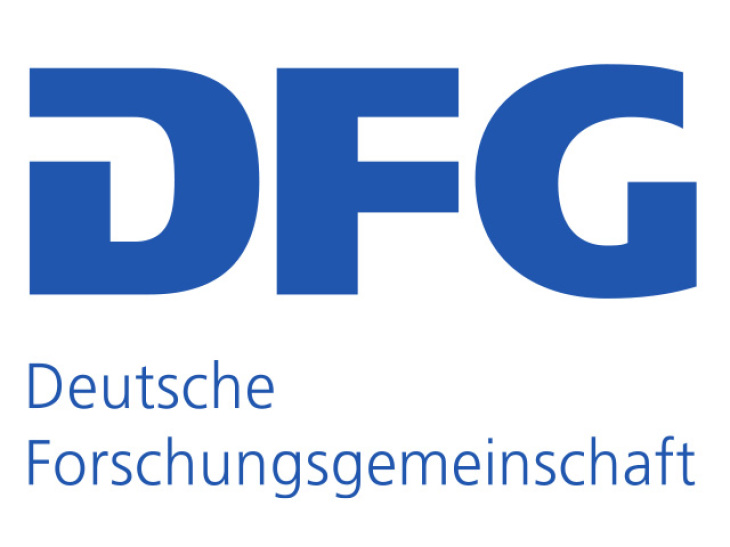
Two researchers (Dr med. vet. Nina Angrisani, Hannover Medical School, and Prof. Dr Regine Willumeit-Römer, Helmholtz-Zentrum Hereon) and their work groups aim to develop an alternative treatment for cartilage lesions using degradable beads made of magnesium and a magnesium-alloy. The research is based on the assumption that magnesium improves the surrounding bone structure. Magnesium (alloy) beads will be implanted into subchondral bone tissue, where they are expected to degrade and thereby positively influence the surrounding tissue.
While magnesium is well-known in the scientific community as implant material, this may be the first attempt to deploy it in the treatment of damaged cartilage. The in vitro and in vivo tests will improve an understanding of magnesium's influence on bone and cartilage. A positive outcome may also significantly improve the treatment of osteoarthritis in the long term.
Based on available material, beads with dimensions of about 0.5 mm have been produced. Degradation properties and biocompatibility are tested in vitro, followed by the employment of a well-known animal model to address the various research questions in and ex vivo, using methods such as µ-computer tomography, protein expression analysis and histological analysis.
Helmholtz-RSF Joint Research Group (2018-2021)

Materials based on magnesium alloys for bioresorbable implants with anti-tumour activity
A Russian-German research collaboration in the fields of resorbable metallic implants as anti-tumour agents. Our Russian project partners are the National University of Science and Technology MISIS, NUST MISIS and the N.N. Blokhin Russian Cancer Research Center.
The project addressed a core problem in modern oncology: the application of local chemotherapy that aims to achieve an efficient concentration of anti-tumor agents in the intra- or peritumoral regions. The chosen approach based on degradable Mg-based implants is to result in a cytoreduction of unresectable and chemo-resistant tumors, while at the same time reducing the side effects for the patients.
RÅC - SynchroLoad (2016-2020)
Failure in biodegradable metal implants
A Swedish-German research collaboration in the fields of materials science and structural biology (Röntgen-Ångström-Cluster).
The aim of this project was to understand how implant degradation and failure mechanisms work for a biodegradable Mg implant where corrosion processes and (bio)chemistry form a complex network of interactions in the living system. The tissue-to-implant interface was characterized biomechanically, morphologically, biologically and chemically. Finally, a comparison of the bone structure around different implant materials was performed.
MgBone (2016 -2019)
Multimodal imaging for structural analysis of bone modeling induced by degraded magnesium implants
Cooperation in the context of the funding sheme research on condensed matter on large devices. There are three partners: The Molecular Imaging North Competence Ceter (MOIN CC) in Kiel, the Helmholtz Center Geesthacht (HZG) and the Department of Prosthodontics of the University of Malmö (MAH).
The aim of the project was to jointly create a measurement and evaluation environment and competence network with the help of which the biomechanical, biomedical, biochemical and physical suitability of innovative implants can be evaluated.
One focus of HZG was the further development of established synchrotron technologies with regard to new sample environments. Drafts and concepts for a push-out cell were developed with which the mechanical stresses in bone and implant can be characterized in situ using X-ray scattering techniques.
Another task of HZG was to examine Mg implants in bone using various synchrotron techniques and merge the results (multimodal evaluation chain). The samples were first characterized using high-resolution synchrotron tomography (SRμCT) in order to study the morphology of the implant, the bone and the degradation products. Investigations with high-resolution small and wide angle scattering (SAXS and XRD) were then carried out in order to assess the bone ultrastructure at the bone-implant interface .
It could be shown that hydroxyapatite crystals in the newly formed bone are much more disordered than in areas that are more distant.
Data obtained in the project enable conclusions about the type of new bone formation at the implant interface and thus contribute to the development of future implants. The aim is to develop implant material specifically with regard to its interaction with bone tissue. This can only succeed if we understand the mutual influence of bone healing and magnesium corrosion.
Helmholtz Virtual Institute MetBioMat (2012 - 2017)
In vivo studies of biodegradable magnesium based implant materials
In collaboration with the university hospitals of Hamburg, Hannover and Graz as well as further partners, the Helmholtz-Zentrum Geesthacht had established a Virtual Institute, whose focus was on degradable magnesium implants. One aim of the research association coordinated from Geesthacht was to develop first prototypes of orthopaedic implants.
The Virtual Institute MetBioMat was one of the Helmholtz Virtual Institutes and lead by Prof. Regine Willumeit-Römer of the Helmholtz-Zentrum Geesthacht. By establishing new research partnerships, Helmholtz Virtual Institutes provided a distinct benefit in preparing the way for larger strategic research projects. With this funding the Helmholtz Association wanted to strengthen the position of universities in the German scientific system. A further aim of the funding programme was to generate new collaboration with leading international partner institutions and the industry.
EU-MCA ETN MagnIM (2011 - 2015)
Tailored biodegradable magnesium implant materials
Cost reduction and improvement of the quality of life is a major issue in health care. This challenge can be tackled by intelligent biomaterials and smart implants which are resorbed by the body upon remodelling of the tissue: What is possible for polymer materials should also be realized for biodegradable metallic materials. “MagnIM - Tailored biodegradable magnesium implant materials” trained 12 ESRs from 9 countries (3 male, 9 female) to contribute to this demanding aims by the development of new aluminium free magnesium implant materials with tailored properties specific for bone related applications especially in children and for sports medicine.
The project was structured such a way that it covered the complete value-added chain from material development and characterisation over in vitro to finally in vivo studies and application. Central point was the optimisation of material properties of aluminium free biodegradable magnesium alloys. To do so a new class of alloys considering computational tools was developed. The processing of the new alloys was be optimised leading to materials which were produced reliably and thus can be applied in orthopeadics and sports medicine. All materials were characterised as produced and in heat treated conditions to gain knowledge on the full property profile (microstructure, mechanical properties ), corrosion, in vitro and in vivo performance. Especially the latter were needed to bring a new implant into application. But as important was the aspect to bridge the gap between the observations made for Mg degradation in vitro and the fundamentally different results obtained in vivo. Therefore, comprehensive chemical understanding of corrosion were combined with the knowledge about cellular reactions to the new materials in order to create an in vitro test system which allowed for reliable prediction of the in vivo properties of the degradable material. To do so a complete set of parameters obtained from in vivo experiments was implemented in a feedback procedure.

